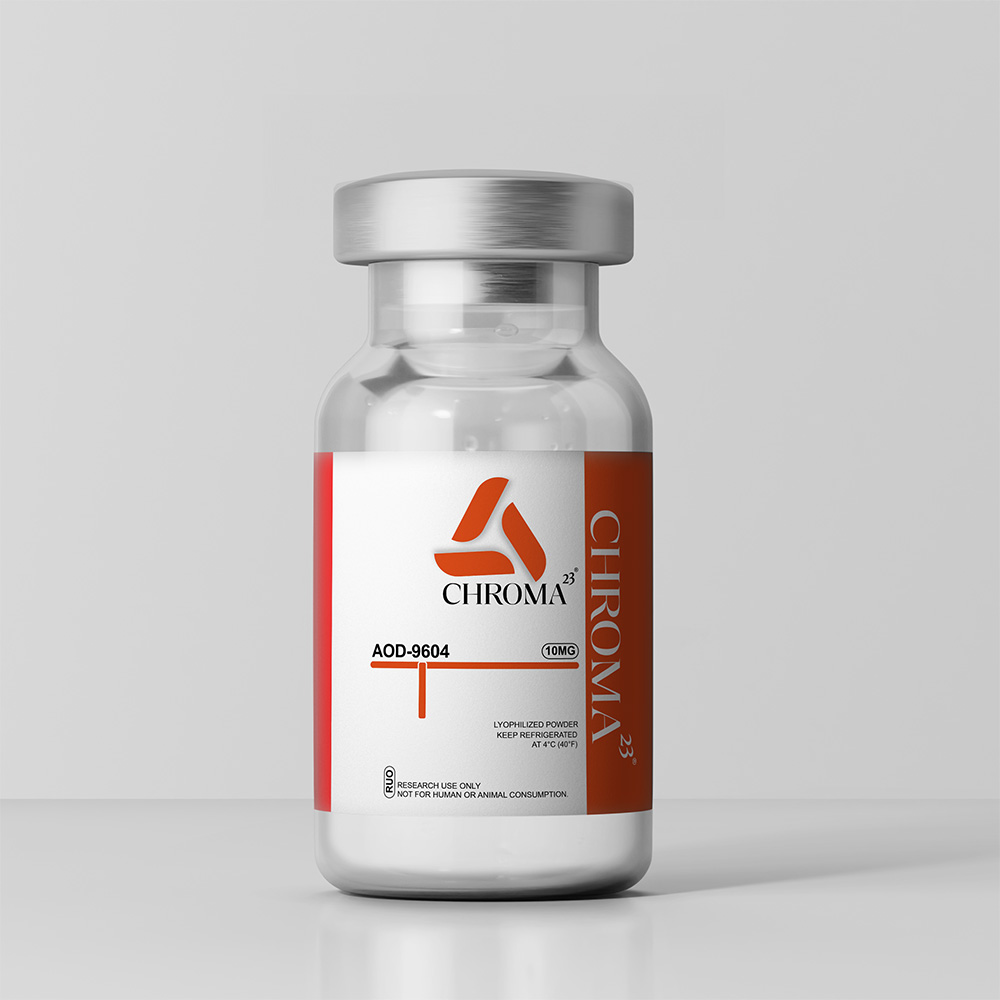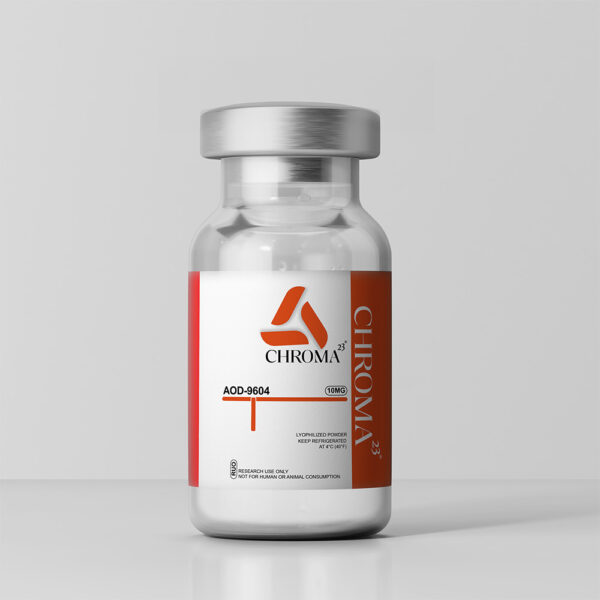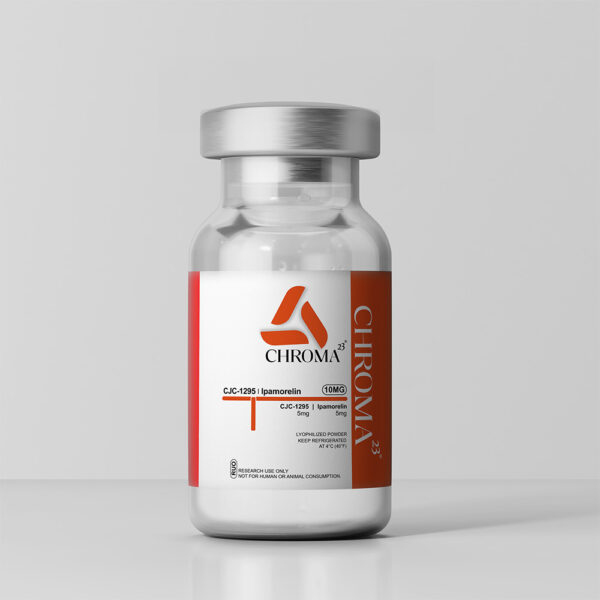AOD-9604 is a synthetic peptide analog derived from the 176-191 amino acid fragment of human growth hormone (HGH). This specific region has been identified as critical for the fat-metabolizing effects of HGH, and AOD-9604 was engineered to isolate these actions while avoiding the broader hormonal effects associated with the complete HGH molecule.
Structurally, AOD-9604 differs from full-length HGH in that it does not activate growth-related pathways, such as those involving IGF-1 (insulin-like growth factor 1). This makes it an attractive compound for researchers studying targeted fat metabolism and body composition without systemic growth stimulation. In animal and in vitro studies, AOD-9604 has demonstrated activity in enhancing lipolysis and inhibiting lipogenesis, particularly in white adipose tissue.
The peptide is believed to work by mimicking the way HGH regulates fat breakdown without significantly affecting carbohydrate metabolism. It appears to act on beta-adrenergic receptors or similar targets involved in lipid metabolism. Importantly, AOD-9604 does not exhibit the diabetogenic or insulin-antagonistic effects seen with full-length growth hormone, which adds to its appeal in obesity and metabolic syndrome research models.
AOD-9604 has also been explored for its potential benefits in cartilage repair. Preliminary studies have indicated that it may stimulate chondrocyte activity and support the regeneration of joint tissue, which opens further research avenues in orthopedic and regenerative medicine.
The peptide has been tested for stability and safety in a variety of laboratory settings, and its favorable pharmacokinetic profile allows for easy integration into long-term animal studies. AOD-9604 has shown low systemic toxicity and does not seem to significantly affect normal endocrine function in test subjects.
Given its fat-specific action and lack of systemic hormonal effects, AOD-9604 is frequently used in metabolic studies, especially those focused on non-anabolic modulation of body fat and energy utilization. Its unique properties provide a valuable tool for scientists researching targeted metabolic pathways without the complications of full hormone supplementation.
For research use only. Not for human or veterinary use.
Product Data
- Chemical Name: Tyr-Leu-Arg-Ile-Val-Gln-Cys-Arg-Ser-Val-Glu-Gly-Ser-Cys-Gly-Phe
- Sequence: Tyr-Leu-Arg-Ile-Val-Gln-Cys-Arg-Ser-Val-Glu-Gly-Ser-Cys-Gly-Phe
- CAS Number: 221231-10-3
- Molecular Formula: C78H123N23O23S2
- Molecular Weight: 1815.1 g/mol





